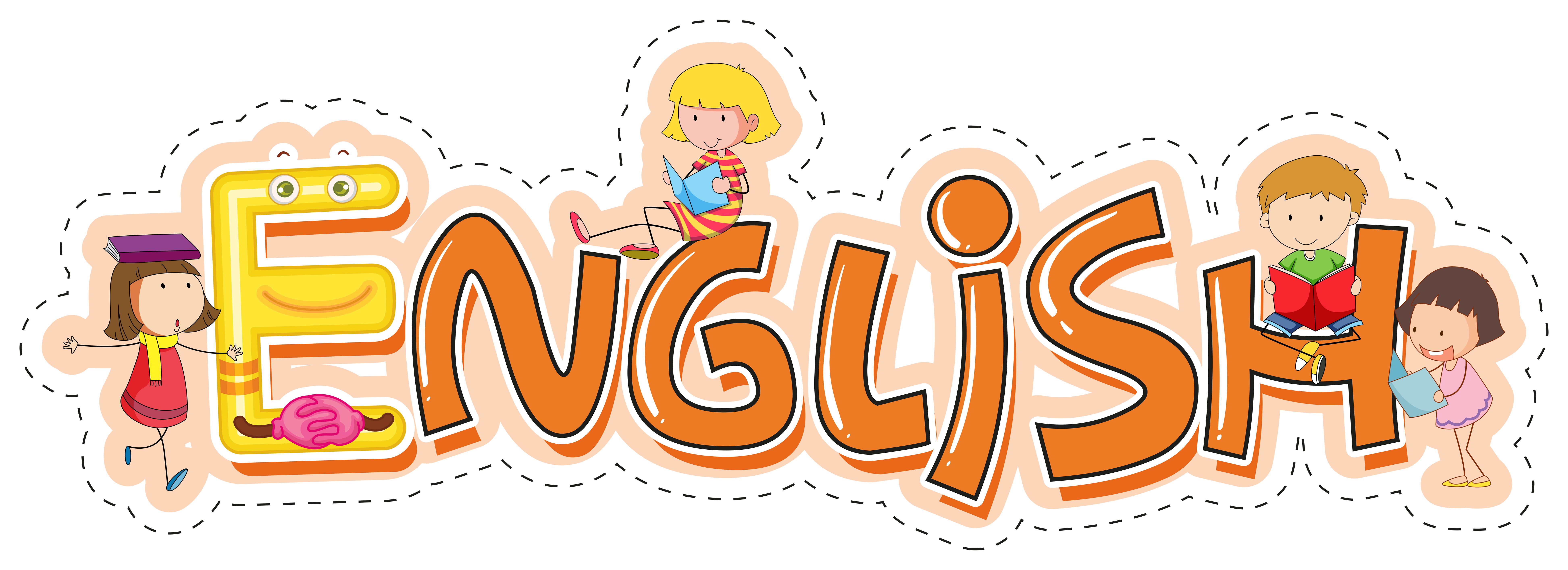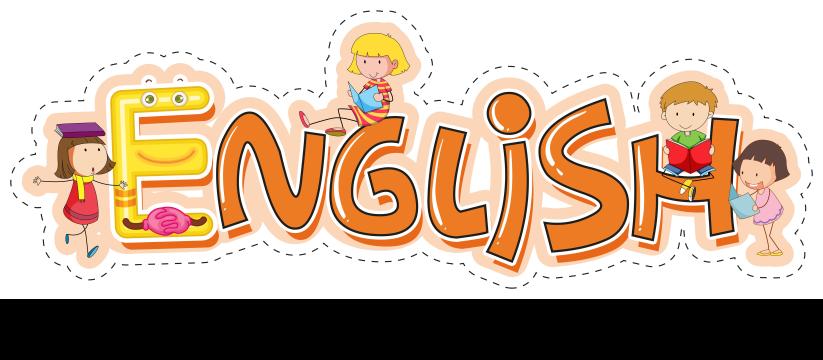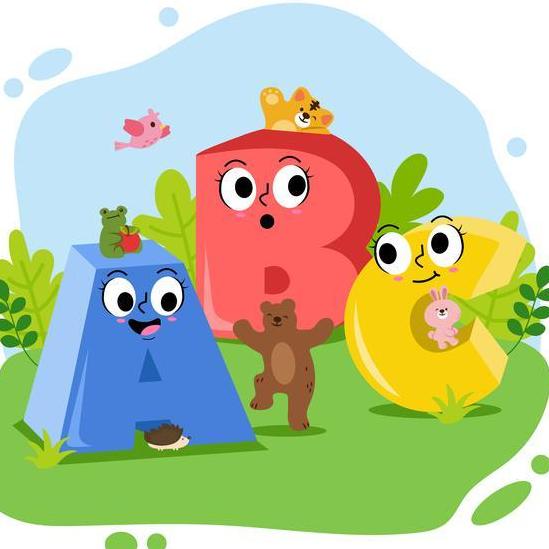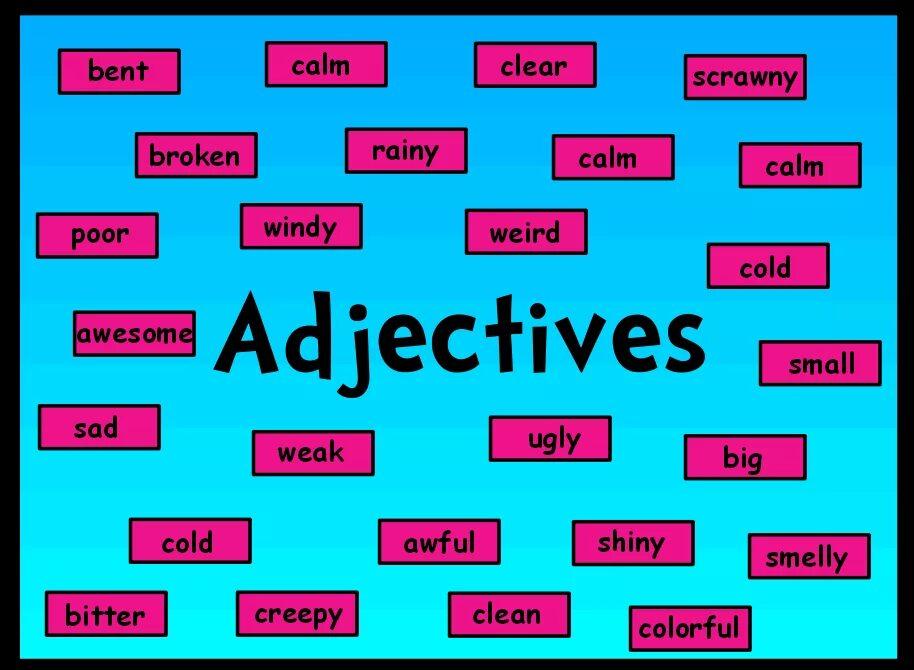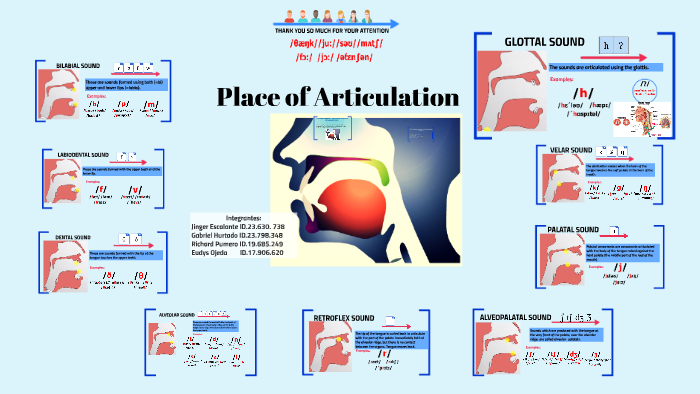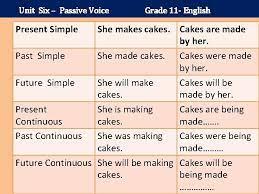- المفضلة
- أخر الاحداث
- استكشف
- الصفحات
- المجموعات
- الاحداث
- المدونات
English Zone learning through exploration, scrutiny, and self-reflection.
- المجموعة العامة
- التعليم
التحديثات الأخيرة
- الرجاء تسجيل الدخول , للأعجاب والمشاركة والتعليق على هذا!
- Adjectives
We use adjectives to describe nouns and pronouns. Adjectives can come before nouns or after linking verbs.
Before the noun:
Examples:
- He dropped the hot plate.
- I have a black cat.
- The small boy ran down the street.
- What a beautiful view!
After a linking verb:
Examples:
- He seems tired.
- The view is beautiful.
- The weather became cold.
- My cat is black.
(Linking verbs are verbs like be , become and seem which are not actions but instead link the subject to an adjective, noun or phrase that gives us more information about the subject.
We make the comparative and superlative of adjectives by adding either -er / -est or using more / most .
Examples:
- She is tall.
- She is taller than her sister.
- She is the tallest person in the classAdjectives We use adjectives to describe nouns and pronouns. Adjectives can come before nouns or after linking verbs. Before the noun: Examples: - He dropped the hot plate. - I have a black cat. - The small boy ran down the street. - What a beautiful view! After a linking verb: Examples: - He seems tired. - The view is beautiful. - The weather became cold. - My cat is black. (Linking verbs are verbs like be , become and seem which are not actions but instead link the subject to an adjective, noun or phrase that gives us more information about the subject. We make the comparative and superlative of adjectives by adding either -er / -est or using more / most . Examples: - She is tall. - She is taller than her sister. - She is the tallest person in the class0 التعليقات 0 نشر1 - مكان النطق
place of articulation
1. Bilabials.
الحروف الشفوية
Bilibaials are consonants produced by using the lips.
الحروف الشفوية هي حروف ساكنه تنتج باستخدام الشفتين.
والحروف هي B, m, p, wمكان النطق place of articulation 1. Bilabials. الحروف الشفوية Bilibaials are consonants produced by using the lips. الحروف الشفوية هي حروف ساكنه تنتج باستخدام الشفتين. والحروف هي B, m, p, w0 التعليقات 0 نشر - تركيب الجملة في اللغة الانجليزية | أقسام الكلام
قبل البدء في تعلم قواعد اللغة الانجليزية نود أن تعرف أهم درس في اللغة الانجليزية و هو كيفية تركيب الجملة فعليك أن تعلم أن كل كلمة في اللغة الانجليزية لا بدّ أن تكون واحدة أو أكثر من أقسام الكلام في اللغة الانجليزية الثمانية التالية :
1-الظرف Adverb
2-الاسم Noun
3-حرف الجر Preposition
4-الضمير Pronoun
5-حرف العطف Conjunction
6-الصفة Adjective
7-التعجب Interjection
8-الفعل Verb
تركيب الجملة في اللغة الانجليزية | أقسام الكلام قبل البدء في تعلم قواعد اللغة الانجليزية نود أن تعرف أهم درس في اللغة الانجليزية و هو كيفية تركيب الجملة فعليك أن تعلم أن كل كلمة في اللغة الانجليزية لا بدّ أن تكون واحدة أو أكثر من أقسام الكلام في اللغة الانجليزية الثمانية التالية : 1-الظرف Adverb 2-الاسم Noun 3-حرف الجر Preposition 4-الضمير Pronoun 5-حرف العطف Conjunction 6-الصفة Adjective 7-التعجب Interjection 8-الفعل Verb0 التعليقات 0 نشر1 - Parts of Speech
تركيب الجملة في اللغة الانجليزية | أقسام الكلام
قبل البدء في تعلم قواعد اللغة الانجليزية نود أن تعرف أهم درس في اللغة الانجليزية و هو كيفية تركيب الجملة فعليك أن تعلم أن كل كلمة في اللغة الانجليزية لا بدّ أن تكون واحدة أو أكثر من أقسام الكلام في اللغة الانجليزية الثمانية التالية :
الظرف Adverb 5 الاسم Noun 1
حرف الجر Preposition 6 الضمير Pronoun 2
حرف العطف Conjunction 7 الصفة Adjective 3
التعجب Interjection 8 الفعل Verb 4Parts of Speech تركيب الجملة في اللغة الانجليزية | أقسام الكلام قبل البدء في تعلم قواعد اللغة الانجليزية نود أن تعرف أهم درس في اللغة الانجليزية و هو كيفية تركيب الجملة فعليك أن تعلم أن كل كلمة في اللغة الانجليزية لا بدّ أن تكون واحدة أو أكثر من أقسام الكلام في اللغة الانجليزية الثمانية التالية : الظرف Adverb 5 الاسم Noun 1 حرف الجر Preposition 6 الضمير Pronoun 2 حرف العطف Conjunction 7 الصفة Adjective 3 التعجب Interjection 8 الفعل Verb 40 التعليقات 0 نشر2 - The present simple tense:
The present simple tense is used to describe actions or states that are habitual, regular, or generally true. It is formed by using the base form of the verb (infinitive) without any changes for the subject, except for the third person singular, where an "-s" or "-es" is added to the verb. Here are some key points to understand about the present simple tense:
Statements: In affirmative statements, the present simple tense follows the pattern: subject + base form of the verb. For example:
"I eat breakfast every morning."
"He plays soccer on weekends."
Third person singular: When the subject is the third person singular (he, she, it, or a singular noun), we add an "-s" or "-es" to the base form of the verb. For example:
"She walks to work every day."
"The cat sleeps a lot."
Negative statements: In negative statements, we use the auxiliary verb "do" in its base form (do not/doesn't) followed by the base form of the main verb. For example:
"I do not like coffee."
"He doesn't watch TV in the morning."
Questions: In questions, we use the auxiliary verb "do" in its base form (do/does) at the beginning of the sentence, followed by the subject and the base form of the main verb. For example:
"Do you like ice cream?"
"Does she speak Spanish?"
Adverbs of frequency: The present simple tense is often used with adverbs of frequency to indicate how often an action occurs. Some common adverbs of frequency include always, usually, often, sometimes, rarely, and never. For example:
"They often go to the beach on weekends."
"She never eats fast food."
General truths and facts: The present simple tense is also used to express general truths, facts, or permanent situations. For example:
"The sun rises in the east."
"Water boils at 100 degrees Celsius."
It's important to note that the present simple tense can also be used to talk about scheduled future events or to refer to past events in narratives, such as in historical or storytelling contexts.
The present simple tense: The present simple tense is used to describe actions or states that are habitual, regular, or generally true. It is formed by using the base form of the verb (infinitive) without any changes for the subject, except for the third person singular, where an "-s" or "-es" is added to the verb. Here are some key points to understand about the present simple tense: Statements: In affirmative statements, the present simple tense follows the pattern: subject + base form of the verb. For example: "I eat breakfast every morning." "He plays soccer on weekends." Third person singular: When the subject is the third person singular (he, she, it, or a singular noun), we add an "-s" or "-es" to the base form of the verb. For example: "She walks to work every day." "The cat sleeps a lot." Negative statements: In negative statements, we use the auxiliary verb "do" in its base form (do not/doesn't) followed by the base form of the main verb. For example: "I do not like coffee." "He doesn't watch TV in the morning." Questions: In questions, we use the auxiliary verb "do" in its base form (do/does) at the beginning of the sentence, followed by the subject and the base form of the main verb. For example: "Do you like ice cream?" "Does she speak Spanish?" Adverbs of frequency: The present simple tense is often used with adverbs of frequency to indicate how often an action occurs. Some common adverbs of frequency include always, usually, often, sometimes, rarely, and never. For example: "They often go to the beach on weekends." "She never eats fast food." General truths and facts: The present simple tense is also used to express general truths, facts, or permanent situations. For example: "The sun rises in the east." "Water boils at 100 degrees Celsius." It's important to note that the present simple tense can also be used to talk about scheduled future events or to refer to past events in narratives, such as in historical or storytelling contexts.0 التعليقات 1 نشر1 - زمن المستقبل البسيط (تكوينه-الاستخدامات-السؤال والنفى والاثبات )مع أمثلة
زمن المستقبل البسيط ( The Simple Future Tense )
يتكون زمن المستقبل البسيط من ( التصريف الأول للفعل + shall ) مع الضمائر ( we – i)
ومن ( التصريف الأول للفعل + will ) مع كل الضمائر:
( التصريف الأول للفعل + shall or will )
أمثلة :
I shall be happy.
I will be happy.
سوف أكون سعيدا .
We shall travel tomorrow.
We will travel tomorrow.
سوف نسافر غدا .
He will do his best.
سوف يفعل ما في وسعه .
They will work together.
سوف يعملون معا .
الصيغة المختصرة لهذا الزمن هي :
I’Il ⇒ (I shall )
He’ll ⇒ (He will )
استخدام زمن المستقبل البسيط :
يعبر عن حدث في المستقبل .
أمثلة :
He will come next week.
سوف يأتي الأسبوع القادم .
She will go to the party next Monday.
سوف تذهب إلى الحفلة يوم الاثنين القادم .
كما يستخدم المستقبل البسيط مع الظروف التالية :
غدا – – – -> tomorrow
قريبا – – – -> soon
قريبا – – – -> shortly
الأسبوع القادم – – – -> next week
الشهر القادم – – -> next month
السنة القادمة – -> next year
يستخدم التعبير ( التصريف الأول للفعل + going to ) ليعطي معنى المستقبل القريب .
مثال :
He is going to write tonight.
إنه سوف يكتب الليلة .
وتستخدم أيضا صيغة المضارع المستمر بمعنى المستقبل .
مثال :
He is leaving tomorrow.
هذه الجملة تعني أنه سيرحل باكر .
شرح زمن المستقبل البسيط بالتفصيل
نركز على تكوين زمن المستقبل البسيط :
بطريقتين :
1- Future ( will )
2- Future ( be going to )
مما يتكون :
(subject الفاعل+ will + verb [ ‘base form’ to مصدر الفعل بدون] )
(will = ‘ll )
I, You, We, They, He, She, It, إسم مفرد/جمع will
I ‘ll help him later.
سوف أساعده لاحقًا
He will play tennis tomorrow.
سيلعب التنس غداً
They will go to London next week.
سوف يذهبون إلى لندن الأسبوع المقبل.
الطريقة الثانية بإستخدام be going to
(subالفاعل+ be[am/is/are] +going to+ verb [base form]… )
ملحوظة : لا تضع أي فعل مكان going لأنه ثابت لا يتغير . كمان لازم بعد going تحط to .
يصرف verb to be إلي —» [am/is/are] علي حسب الفاعل
I ⇒ am
He , She , It , اسم مفرد ⇒ is
You , We , They , اسم جمع ⇒ are
في التحدث والكتابة غير الرسمية ممكن تختصر( going to = gonna )
الناس اللي بتتلغبط بين المستقبل البسيط بإستخدام (be going to ) وبين المضارع المستمر ( be going to )
I am going to cinema.
.أنا ذاهب إلى السينما
لو going to أتي بعدها إسم إذا الجملة في زمن المضارع المستمر ( هنا to اللي بعد going حرف جر بييجي بعده مكان )
I am going to play
أنا سوف ألعب
لو going to أتي بعدها فعل إذا الجملة في زمن المستقبل البسيط ( هنا to اللي بعد going دي ثابتة في التكوين ولازم بعدها فعل )
I am going to play with my friends after school .
سوف ألعب مع أصدقائي بعد المدرسة .
She is going to meet Ali tonight.
سوف تقابل علي الليلة .
We are going to have a drink after work.
سوف نتناول مشروب بعد العمل .
النفى فى زمن المستقبل البسيط.
1- (subject الفاعل+ will+not + verb [base form]… )
VERB WILL + NOT SUBJECT
work will not I/You/He/She/It
work will not We/You/They
زمن المستقبل البسيط (تكوينه-الاستخدامات-السؤال والنفى والاثبات )مع أمثلة زمن المستقبل البسيط ( The Simple Future Tense ) يتكون زمن المستقبل البسيط من ( التصريف الأول للفعل + shall ) مع الضمائر ( we – i) ومن ( التصريف الأول للفعل + will ) مع كل الضمائر: ( التصريف الأول للفعل + shall or will ) أمثلة : I shall be happy. I will be happy. سوف أكون سعيدا . We shall travel tomorrow. We will travel tomorrow. سوف نسافر غدا . He will do his best. سوف يفعل ما في وسعه . They will work together. سوف يعملون معا . الصيغة المختصرة لهذا الزمن هي : I’Il ⇒ (I shall ) He’ll ⇒ (He will ) استخدام زمن المستقبل البسيط : يعبر عن حدث في المستقبل . أمثلة : He will come next week. سوف يأتي الأسبوع القادم . She will go to the party next Monday. سوف تذهب إلى الحفلة يوم الاثنين القادم . كما يستخدم المستقبل البسيط مع الظروف التالية : غدا – – – -> tomorrow قريبا – – – -> soon قريبا – – – -> shortly الأسبوع القادم – – – -> next week الشهر القادم – – -> next month السنة القادمة – -> next year يستخدم التعبير ( التصريف الأول للفعل + going to ) ليعطي معنى المستقبل القريب . مثال : He is going to write tonight. إنه سوف يكتب الليلة . وتستخدم أيضا صيغة المضارع المستمر بمعنى المستقبل . مثال : He is leaving tomorrow. هذه الجملة تعني أنه سيرحل باكر . شرح زمن المستقبل البسيط بالتفصيل نركز على تكوين زمن المستقبل البسيط : بطريقتين : 1- Future ( will ) 2- Future ( be going to ) مما يتكون : (subject الفاعل+ will + verb [ ‘base form’ to مصدر الفعل بدون] ) (will = ‘ll ) I, You, We, They, He, She, It, إسم مفرد/جمع will I ‘ll help him later. سوف أساعده لاحقًا He will play tennis tomorrow. سيلعب التنس غداً They will go to London next week. سوف يذهبون إلى لندن الأسبوع المقبل. الطريقة الثانية بإستخدام be going to (subالفاعل+ be[am/is/are] +going to+ verb [base form]… ) ملحوظة : لا تضع أي فعل مكان going لأنه ثابت لا يتغير . كمان لازم بعد going تحط to . يصرف verb to be إلي —» [am/is/are] علي حسب الفاعل I ⇒ am He , She , It , اسم مفرد ⇒ is You , We , They , اسم جمع ⇒ are في التحدث والكتابة غير الرسمية ممكن تختصر( going to = gonna ) الناس اللي بتتلغبط بين المستقبل البسيط بإستخدام (be going to ) وبين المضارع المستمر ( be going to ) I am going to cinema. .أنا ذاهب إلى السينما لو going to أتي بعدها إسم إذا الجملة في زمن المضارع المستمر ( هنا to اللي بعد going حرف جر بييجي بعده مكان ) I am going to play أنا سوف ألعب لو going to أتي بعدها فعل إذا الجملة في زمن المستقبل البسيط ( هنا to اللي بعد going دي ثابتة في التكوين ولازم بعدها فعل ) I am going to play with my friends after school . سوف ألعب مع أصدقائي بعد المدرسة . She is going to meet Ali tonight. سوف تقابل علي الليلة . We are going to have a drink after work. سوف نتناول مشروب بعد العمل . النفى فى زمن المستقبل البسيط. 1- (subject الفاعل+ will+not + verb [base form]… ) VERB WILL + NOT SUBJECT work will not I/You/He/She/It work will not We/You/They0 التعليقات 0 نشر - الجملة المستمرة :– نقسم الجملة إلى مكوناتها الأساسية .
– نضع المفعول به فاعلاً للجملة الجديدة .
– نضع فعل الكون المناسب للفاعل الجديد ولزمن الجملة .
– نضع ((being .
– نضع الفعل الرئيسي في التصريف الثالث .
Somebody is cleaning the room at the moment.
The room is being cleaned at the moment.
شخصٌ ما ينظف الغرفة في هذه اللحظة.إن الغرفة تُنظَّفُ في هذه اللحظة.
Look at those old houses! They are being knocked down.
انظر إلى تلك المنازل القديمة! إنها تُهدَّم.
الجملة المستمرة :– نقسم الجملة إلى مكوناتها الأساسية . – نضع المفعول به فاعلاً للجملة الجديدة . – نضع فعل الكون المناسب للفاعل الجديد ولزمن الجملة . – نضع ((being . – نضع الفعل الرئيسي في التصريف الثالث . Somebody is cleaning the room at the moment. The room is being cleaned at the moment. شخصٌ ما ينظف الغرفة في هذه اللحظة.إن الغرفة تُنظَّفُ في هذه اللحظة. Look at those old houses! They are being knocked down. انظر إلى تلك المنازل القديمة! إنها تُهدَّم.0 التعليقات 0 نشر - المبني للمجهول في اللغة الانجليزية Passive voice
كيفية تحويل الجملة من المبني للمعلوم ( Active) إلى المبني للمجهول (Passive)
Passive voice المبني للمجهول
الجملة البسيطة :– نقسم الجملة إلى مكوناتها الأساسية ( فاعل / فعل / مفعول به ) .
– نضع المفعول به فاعلاً للجملة الجديدة .
– نضع فعل الكون المناسب للفاعل الجديد ولزمن الجملة(was-were-am-is-are)
– نضع الفعل الرئيسي في التصريف الثالث .
بنى شخصٌ ما هذا المنزل في عام 1895.بُنيَ هذا المنزل في عام 1895.
بُنيَ هذا المنزل من قِبَل جدي.
Someone built this house in 1895.
This house was built in 1895.
This house was built by grandfather.
شخصٌ ما ينظف هذا الغرفة كل يوم.هذه الغرفة تُنظّف كل يوم. Somebody cleans this room every day.This room is cleaned every day.
تَنتُج العديد من الحوادث بسبب القيادة المتهورة.
Many accidents are caused by dangerous driving.
إنني لا أُدعى كثيراً إلى الحفلات I‘m not often invited to parties.
كم شخصاً يُصاب في حوادث الطريق كل يوم؟ How many people are injured in road accidents every day?
شخصٌ ما نظّف هذه الغرفة البارحة.نُظِّفت هذه الغرفةُ البارحة.
Somebody cleaned this room yesterday.
This room was cleaned yesterday.المبني للمجهول في اللغة الانجليزية Passive voice كيفية تحويل الجملة من المبني للمعلوم ( Active) إلى المبني للمجهول (Passive) Passive voice المبني للمجهول الجملة البسيطة :– نقسم الجملة إلى مكوناتها الأساسية ( فاعل / فعل / مفعول به ) . – نضع المفعول به فاعلاً للجملة الجديدة . – نضع فعل الكون المناسب للفاعل الجديد ولزمن الجملة(was-were-am-is-are) – نضع الفعل الرئيسي في التصريف الثالث . بنى شخصٌ ما هذا المنزل في عام 1895.بُنيَ هذا المنزل في عام 1895. بُنيَ هذا المنزل من قِبَل جدي. Someone built this house in 1895. This house was built in 1895. This house was built by grandfather. شخصٌ ما ينظف هذا الغرفة كل يوم.هذه الغرفة تُنظّف كل يوم. Somebody cleans this room every day.This room is cleaned every day. تَنتُج العديد من الحوادث بسبب القيادة المتهورة. Many accidents are caused by dangerous driving. إنني لا أُدعى كثيراً إلى الحفلات I‘m not often invited to parties. كم شخصاً يُصاب في حوادث الطريق كل يوم؟ How many people are injured in road accidents every day? شخصٌ ما نظّف هذه الغرفة البارحة.نُظِّفت هذه الغرفةُ البارحة. Somebody cleaned this room yesterday. This room was cleaned yesterday.0 التعليقات 0 نشر
شاهد المزيد

